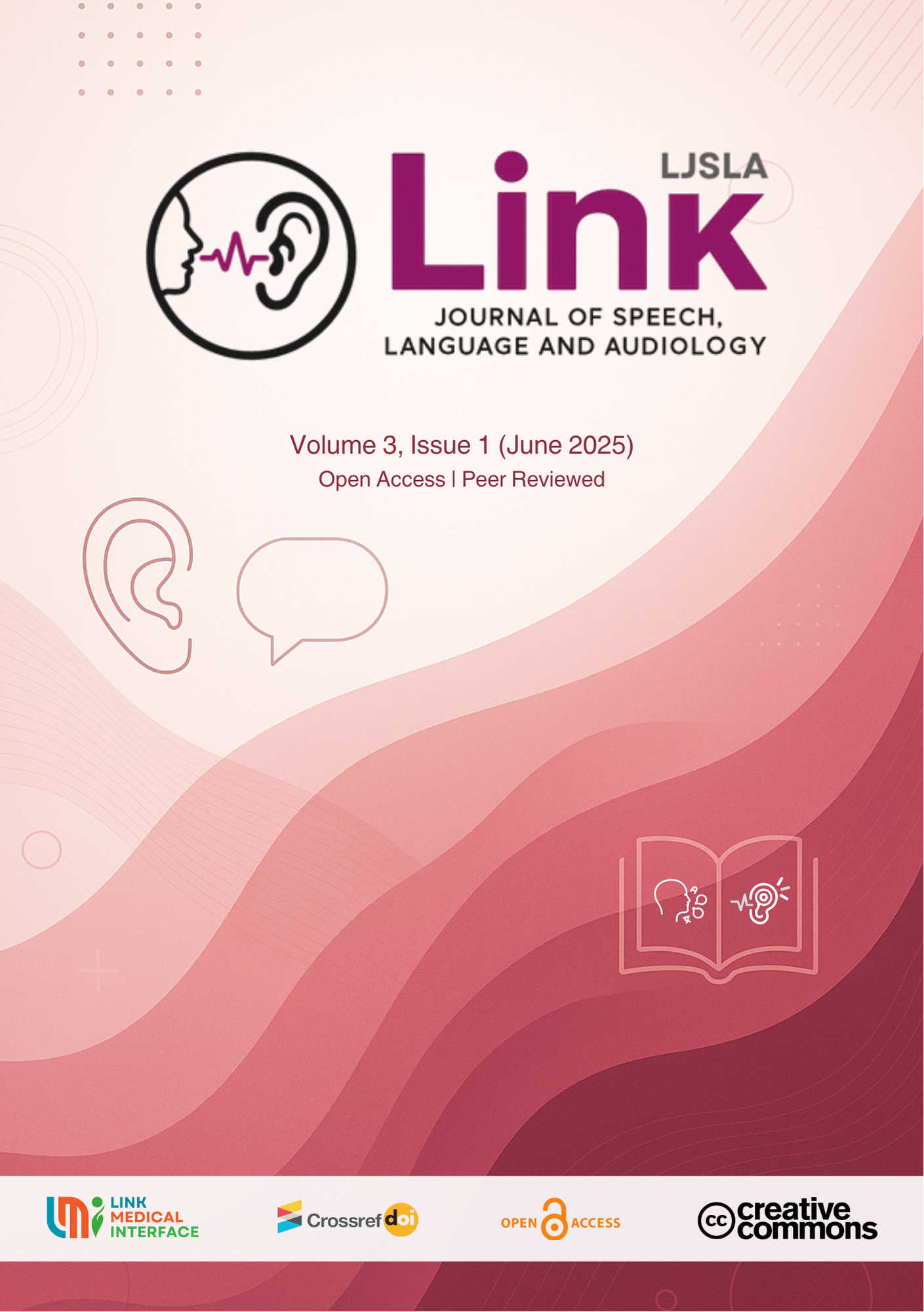Comparison of Listening Fatigue in Children with and Without Hearing Impairment
DOI:
https://doi.org/10.61919/ljsla.vi.7Keywords:
Listening fatigue; hearing loss; sensorineural hearing loss; Vanderbilt Fatigue Scale; pediatric audiologyAbstract
Background: Listening fatigue, defined as the subjective sense of exhaustion resulting from sustained auditory processing, is a growing concern among children with hearing impairment. It is associated with increased cognitive load, reduced classroom engagement, and adverse effects on academic performance and psychosocial well-being. Children with normal hearing may also experience listening fatigue, but the extent of difference between the two groups remains inadequately explored. Objective: To evaluate and compare the levels of listening fatigue in children with and without hearing impairment using validated fatigue assessment tools. Methods: A cross-sectional observational study was conducted on 120 children aged between 4 to 13 years, including 60 with bilateral sensorineural hearing loss (mild to severe) and 60 with normal hearing, recruited from mainstream and special schools. Listening fatigue was assessed using the Vanderbilt Fatigue Scale – Teacher version (VFS-T). Data was analyzed with SPSS version 20.0 using t-tests, chi-square tests, and multivariate regression, with p < 0.05 considered significant. Results: Children with hearing impairment had significantly higher mean VFS-T scores (26.45 ± 4.59) compared to normal-hearing children (19.28 ± 3.37; p < 0.001, Cohen’s d = 1.82). Over 93% of the hearing-impaired group required follow-up for listening fatigue versus 13% in controls. Conclusion: Listening fatigue is significantly elevated in children with hearing impairment, warranting early identification and targeted classroom interventions to optimize learning outcomes.
Downloads
Published
Issue
Section
License
Copyright (c) 2025 Link Journal of Speech, Language and Audiology; Muhammad Jamil, Abrar Ahmed, Hafiz Asad Ali, Muhammad Shazaib Khan, Malik Muhammad Qasim

This work is licensed under a Creative Commons Attribution 4.0 International License.


